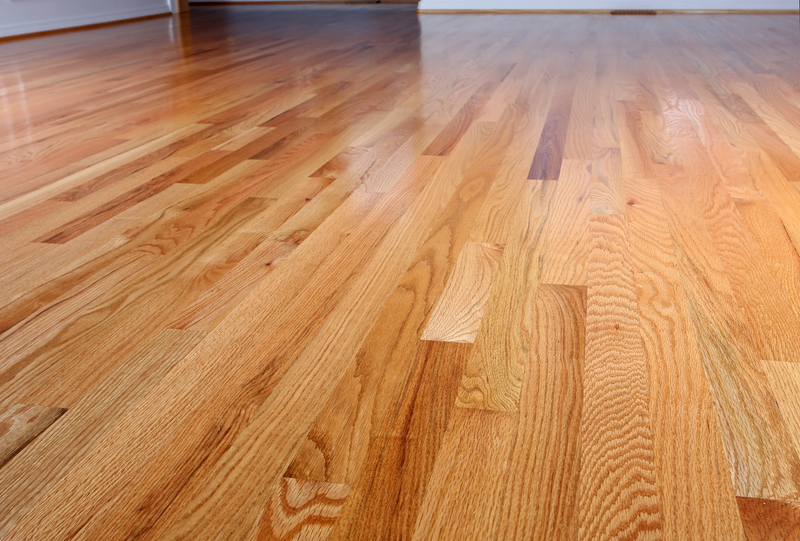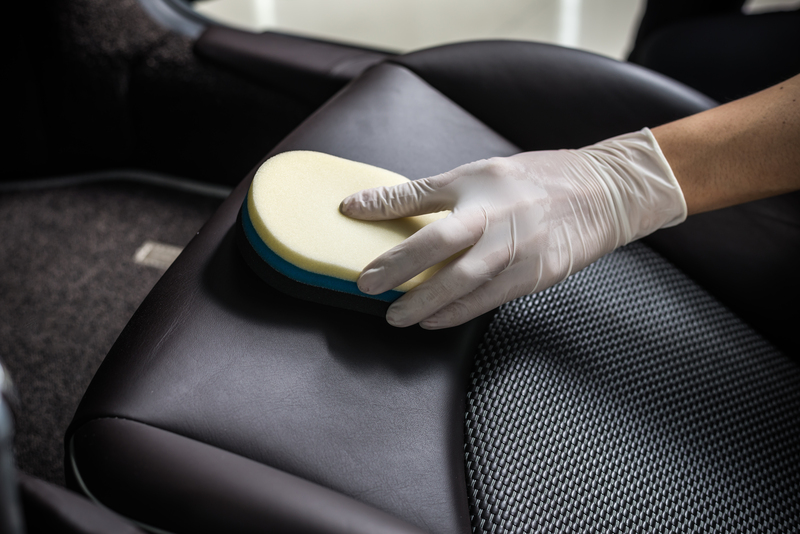Know the Best Practices for Washing and Preserving Velvet Curtains
Posted on 12/06/2025
Velvet curtains are a luxurious and timeless window treatment, offering elegance and sophistication to any space. However, the rich pile and delicate fibers of velvet require special attention when it comes to maintenance and cleaning. If you're searching for an expert guide to washing and preserving velvet curtains, you've come to the right place. In this comprehensive article, we'll walk you through everything you need to know about cleaning, storing, and prolonging the lifespan of your velvet drapes with tried-and-true methods.
Understanding Velvet: Types & Characteristics
Before diving into cleaning techniques, it's essential to understand the different types of velvet and what makes them so unique. The term velvet refers to a woven fabric with a dense pile of evenly cut fibers that have a smooth, soft feel. While cotton velvet was traditionally the most common, innovations have produced synthetic versions like polyester velvet and rayon velvet. These improvements make proper care even more important to maintain their appearance and texture.
- Crushed Velvet: Features a deliberately crumpled, textured effect for a dramatic look.
- Silk Velvet: Extremely luxurious, lightweight, and delicate to touch.
- Cotton Velvet: Durable and easier to clean, but still requires gentle care.
- Synthetic Velvet: Typically made from polyester or nylon, more stain-resistant but still sensitive to heat and friction.
Each type requires personalized attention. Knowing your curtain fabric will help you choose the best practices for washing and preserving velvet curtains in your home.

How Often Should You Clean Velvet Curtains?
Velvet drapes don't need frequent washing, as excessive cleaning can damage their fibers. Instead, light maintenance and spot cleaning are recommended to keep them looking fresh and elegant between deeper cleans.
- Regular Maintenance: Every 1-2 weeks, use a soft brush or vacuum with a brush attachment to gently remove dust and debris.
- Spot Cleaning: Attend to any stains or spills immediately to prevent permanent damage.
- Deep Cleaning: Ideally, every 6-12 months or as needed, depending on environmental factors like smoke, pets, or location.
By following a careful schedule, you'll minimize wear and tear, ensuring your velvet curtains retain their luster for years to come.
The Best Way to Clean Velvet Curtains
One of the biggest mistakes homeowners make is treating velvet fabric like ordinary textiles. In reality, the soft nap and delicate surface require special handling. Here are the safest and most effective ways to wash and preserve velvet curtains:
1. Read the Manufacturer's Care Label
Always start by checking the care label attached to your curtains. Some velvet materials, especially silk or viscose velvet, may only be suitable for dry cleaning, while others like cotton or synthetic velvet might be machine washable on a gentle cycle.
2. Vacuum with Care
For regular upkeep, vacuum your velvet drapes using a soft upholstery attachment. Do this every couple of weeks to prevent dust buildup. Remember to:
- Use low suction to avoid pulling on delicate fibers.
- Brush in the direction of the nap (the natural lay of the fibers) for a polished, uniform look.
- Spot clean any marks or stains before they set in.
3. Spot Cleaning Velvet Drapes
Should a spill or smudge occur, immediate spot cleaning is essential. Here's how to tackle minor stains without damaging your velvet curtains:
- Blot the stain gently with a clean, dry cloth or paper towel to absorb as much liquid as possible--never rub, as this can crush the pile.
- Mix a few drops of mild dish soap with lukewarm water.
- Dampen a soft cloth in the solution and dab the stained area gently.
- Use another clean, damp cloth to blot away any soap residue.
- Allow the area to air dry entirely. Once dry, use a soft brush to restore the nap.
4. Hand Washing Velvet Curtains
If the care label approves hand washing, follow these best practices for cleaning velvet curtains by hand:
- Fill a large basin or bathtub with cold or lukewarm water and a gentle detergent.
- Submerge the curtains and gently swish them around--never wring, twist, or scrub the fabric.
- Rinse thoroughly with cold water until no suds remain.
- Carefully lift the curtains out, supporting their full weight to avoid stretching.
- Lay them flat on a clean towel and gently roll them to remove excess moisture.
- Reshape and air dry by hanging them back up or laying them on a mesh drying rack.
5. Machine Washing: Yes or No?
While certain synthetic velvet curtains may be labeled as machine washable, it's crucial to use cold water and a gentle or delicate cycle. Place your drapes inside a mesh laundry bag to prevent snagging. Never use bleach or fabric softener on velvet, as it can damage fibers and alter color.
Air drying is essential--do not tumble dry, as the heat can crush and permanently alter the velvet's appearance.
6. Professional Dry Cleaning
For valuable, antique, or silk velvet curtains, or when in doubt, professional dry cleaning is your safest bet. Inform your dry cleaner of any stains and ensure they use gentle solvents appropriate for delicate velvet.
Maintaining the Beauty of Velvet Curtains
Proper ongoing care goes a long way in preserving velvet curtains and keeping them looking their best. Here are expert tips for everyday maintenance:
- Avoid Direct Sunlight: Prolonged UV exposure may cause fading or discoloration. Use lining or sheers as extra protection.
- Keep Away from Heat Sources: Radiators, fireplaces, or vents can dry out and weaken velvet fibers.
- Minimize Contact: Avoid touching or brushing against the curtains unnecessarily, as this can flatten the pile.
- Steaming Over Ironing: To remove wrinkles, hang the curtains and use a handheld steamer at a safe distance. Avoid direct iron contact, which can crush velvet nap.
- Rotate Curtains: If possible, occasionally switch curtain panels between windows to even out exposure to light and use.
Restoring Velvet's Nap
If your velvet curtains start to look crushed or lose their luster, gently brush the surface with a soft-bristled upholstery brush, always in the direction of the nap. For stubborn marks, a quick pass with a steamer can restore volume and shine.
Storing Velvet Curtains Properly
Sometimes you may want to store your velvet drapes, whether for a seasonal switch-out or during renovations. Preserving their quality in storage is just as important as regular cleaning.
Best Storage Practices for Velvet Curtains
- Clean First: Only store curtains that have been freshly cleaned and completely dried.
- Avoid Folding: If possible, roll your velvet curtains rather than folding them to prevent creases and crush marks.
- Use Acid-Free Tissue Paper: Place sheets between folds or layers for added protection against friction and dust.
- Store in a Cool, Dry Place: Choose a well-ventilated spot away from direct heat, sunlight, or moisture, which can cause mold or fading.
- Breathable Bags: Use cotton or muslin garment bags instead of plastic to reduce condensation and allow air circulation.
Common Mistakes to Avoid When Washing Velvet Curtains
Even with the best intentions, mistakes can happen. Here are a few pitfalls to watch out for:
- Using Hot Water: Heat can shrink or distort velvet fibers--always stick to cold or lukewarm settings.
- Rubbing or Scrubbing: Aggressive cleaning damages the velvet's surface and flattens the nap.
- Applying Household Cleaners: Harsh chemicals can discolor or destroy delicate fabric.
- Wringing Out Water: Excess twisting stretches and weakens the weave.
- Skipping Spot Tests: Always test new cleaning solutions on a hidden area to prevent unexpected damage.

FAQs on Washing and Preserving Velvet Curtains
Q: Can all velvet curtains be washed at home?
Not all velvet curtains are suitable for home washing. Always refer to the care label for specific cleaning instructions, and opt for dry cleaning if in doubt, especially with silk or antique velvet.
Q: How do you un-crush or fluff up velvet curtains?
Lightly steam the affected area from a short distance and gently brush the fabric in the direction of the nap. Never iron directly on velvet.
Q: Does velvet attract dust?
Yes, velvet's pile tends to attract dust particles. Regular gentle vacuuming will help keep dust at bay.
Q: How often should I deep clean velvet curtains?
Deep clean every 6-12 months or more frequently if they are in high-traffic areas or exposed to smoke, pets, or cooking odors.
Q: Is it safe to use a fabric freshener spray?
It's best to avoid conventional fabric sprays, which may leave residue or affect the nap. For a fresh scent, air curtains outdoors in shade, weather permitting.
Conclusion: Preserve the Luxury of Your Velvet Curtains
Velvet curtains bring unmatched beauty and texture to your interiors, but they demand attentive care to stay looking impeccable. By following these best practices for washing and preserving velvet curtains--from gentle cleaning methods to proper storage--you'll safeguard your investment for years to come. Treat your velvet drapes with the respect they deserve, and they'll reward you with enduring elegance every season.
- Check care labels for specific instructions
- Dust regularly with gentle vacuuming
- Spot clean promptly and avoid harsh chemicals
- Hand wash carefully when appropriate
- Trust professionals with delicate or antique velvet
- Store thoughtfully to prevent damage
With the information and techniques provided in this article, you can confidently maintain the beauty, vibrancy, and plush texture of your velvet curtains. Enjoy the luxury--properly preserved and always stunning!





